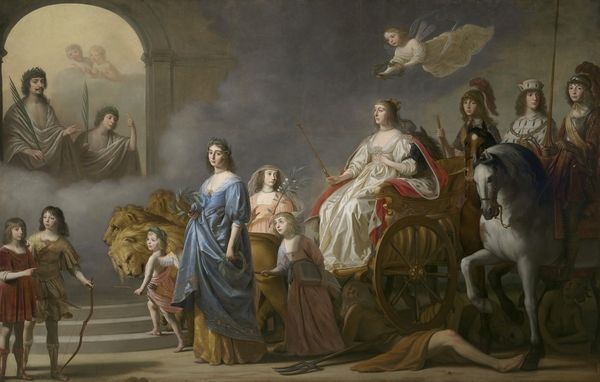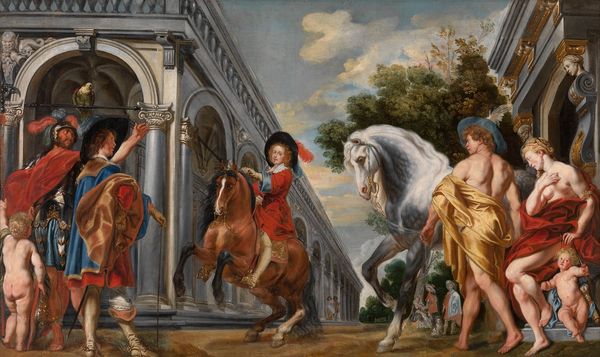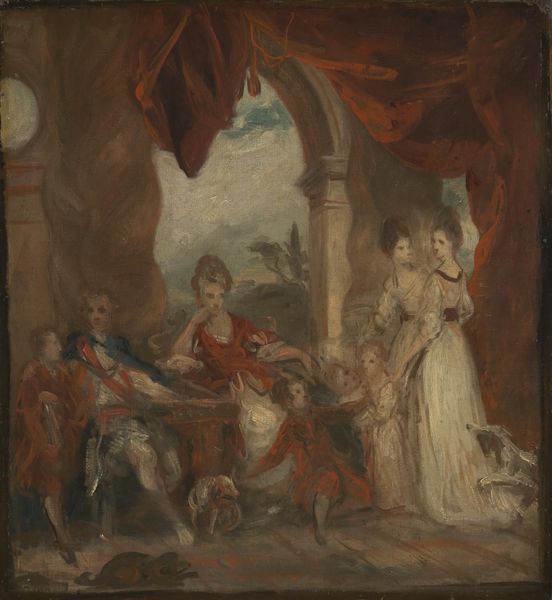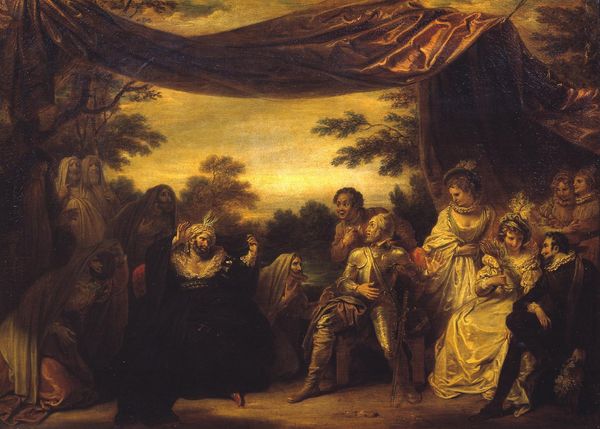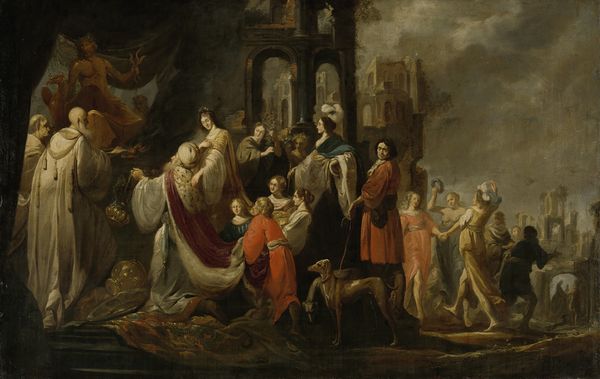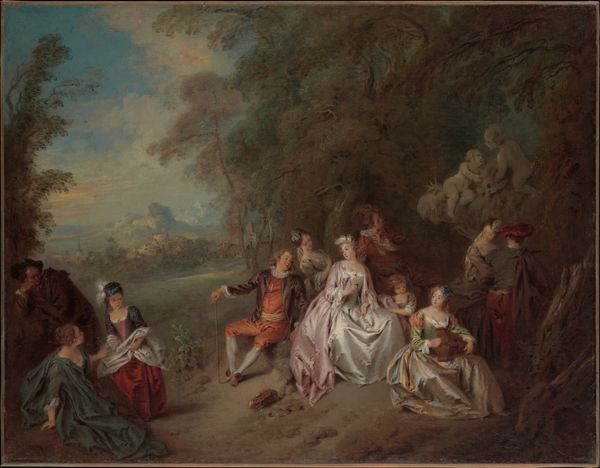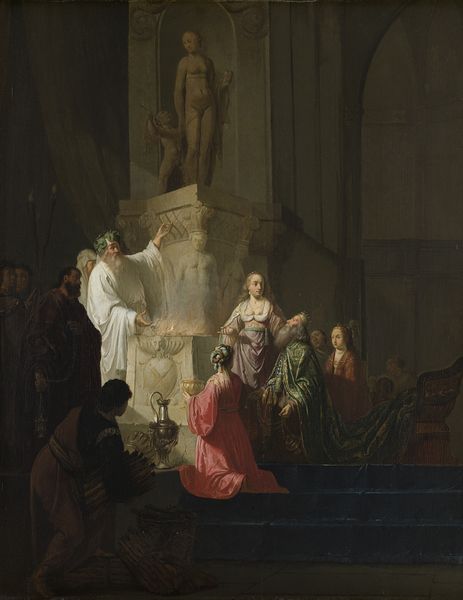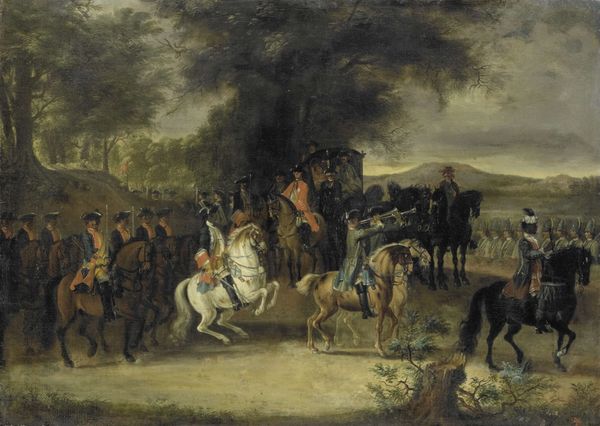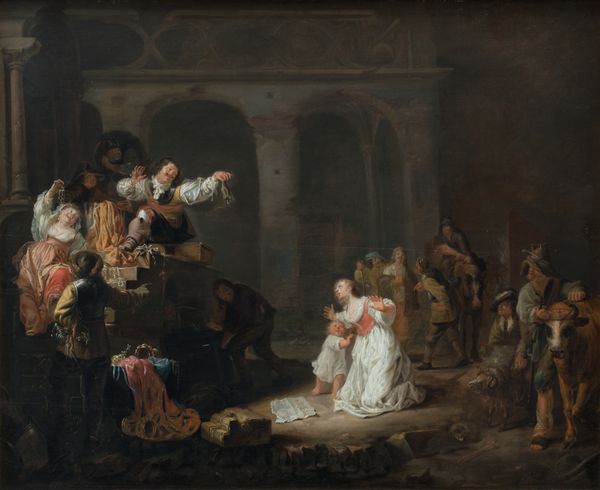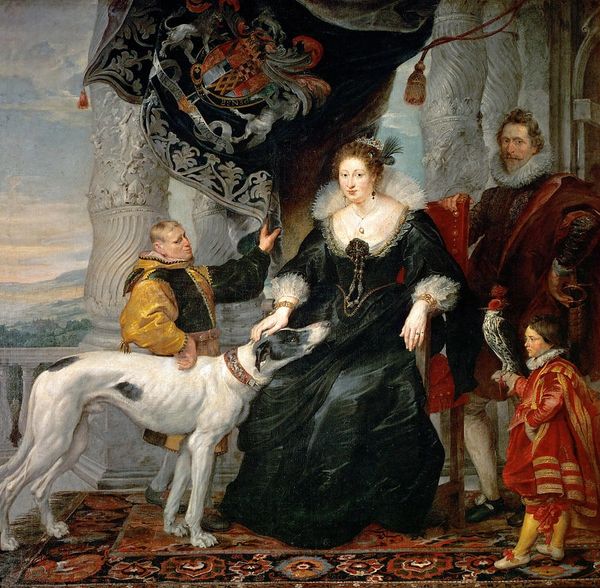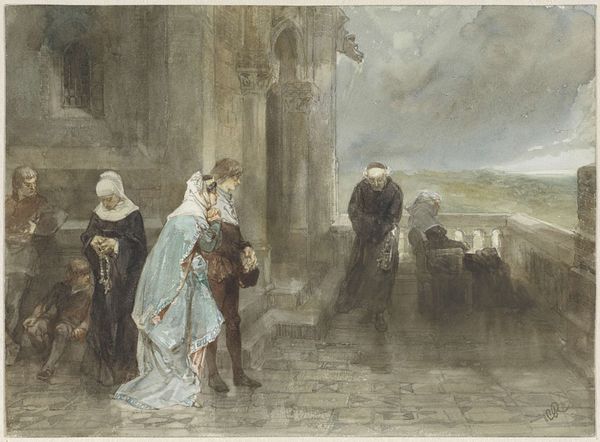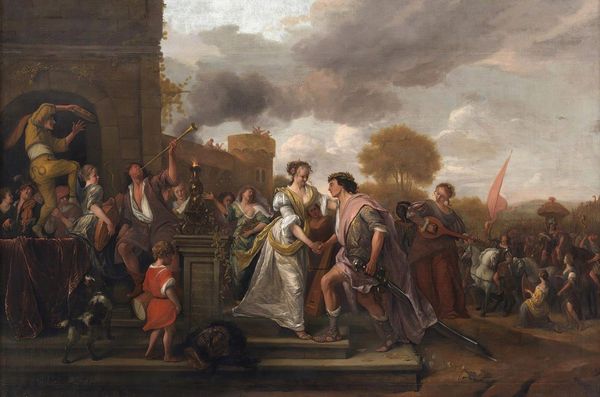
The Leavetaking of Captain Hendrik de Sandra (1619-1707), sent off by his Wife and Children 1661
0:00
0:00
#
portrait
#
baroque
#
oil painting
#
group-portraits
#
genre-painting
#
history-painting
Dimensions: height 154.5 cm, width 245.5 cm, depth 6.3 cm
Copyright: Rijks Museum: Open Domain
Curator: Today, we're looking at "The Leavetaking of Captain Hendrik de Sandra (1619-1707), sent off by his Wife and Children" by Pieter van Anraedt, painted in 1661. The artist used oil on canvas. Editor: It has such a melancholy, romantic feel, like the final act of some grand opera. It's a departure, tinged with the bittersweet awareness of what's being left behind. That misty background adds to the dreaminess, doesn’t it? Curator: The composition certainly leads to that reading. We have this central grouping – Captain de Sandra, his wife, children, all meticulously rendered, with the figures gradually fading out of focus as they recede into the background. Semiotically, the steps down represent his descent into the world of action, separate from domestic comforts. Editor: Yes, you feel the pull on him, this noble imperative, and yet you sense a deep resignation too. The white of the wife's gown against his dark coat—it’s a stark visual contrast of duties. The children, like little radiant angels, holding onto him... I am captivated. Curator: Structurally, observe the use of light and shadow. Anraedt guides our gaze through contrasting tonalities, creating a narrative of departure and return, a journey away from the light, toward an unknown future. There's tension between foreground detail and background haziness, and that functions as a visual metaphor for the uncertain road ahead. Editor: Right. That haziness mirrors our own human struggle to see clearly into the future, what choices we will face, and what those outcomes may hold. So he mounts that prancing white horse… but toward what destiny? Is this about service, about honor, or merely the grind of historical inevitability? Curator: Interesting questions. Through a Formalist reading, the artist uses visual cues to hint, not resolve; allowing for individual interpretive response from the audience. Editor: So even centuries later, we are all there, sending our dear ones off to some uncertain horizon, and that's what makes it timeless, I guess. Curator: Precisely. Editor: A fascinating piece, capturing both the personal and historical moment so compellingly. Curator: Indeed. It gives us much to consider about human relationships, honor and destiny.
Comments
No comments
Be the first to comment and join the conversation on the ultimate creative platform.
